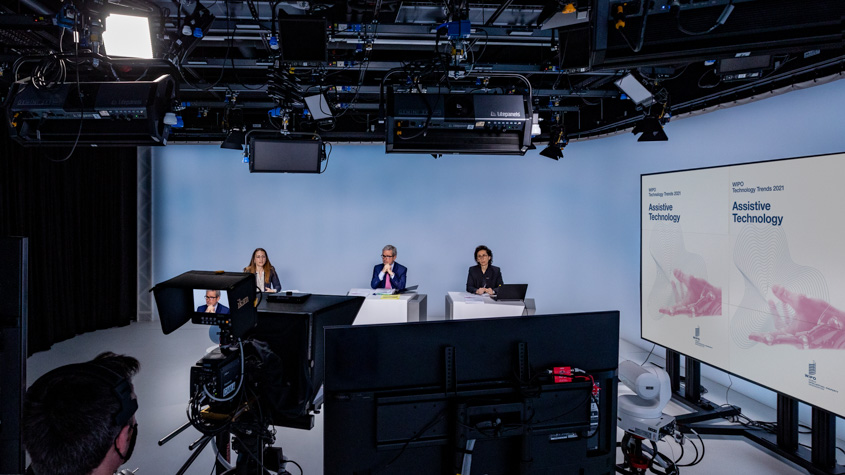WIPO
- | March 13, 2024

Innovations that help people overcome mobility, sight and other disabilities have seen double-digit growth in recent years and these “assistive technologies” are increasingly integrated with consumer goods, a new WIPO report shows.
According to the WIPO Technology Trends Report 2021: Assistive Technologies, over 1 billion people currently need assistive technology – a figure expected to double in the next decade as populations age. At the same time, consumer electronics and assistive products are converging, meaning even greater commercialization of these technologies.
The report shows that innovations, ranging from small improvements in existing products to cutting-edge developments in frontier technologies, can greatly improve the lives of persons with functional limitations. These technologies help them overcome daily obstacles in navigating their environments, communicating, working and living independently.
The report uses patent and other data to provide solid, factual evidence on innovation in the global assistive tech landscape, creating a knowledge base to inform and support business leaders, researchers and policy-makers in their decision-making. It finds that China, the U.S., Germany, Japan and the Republic of Korea are the five main origins of innovation in assistive technology.
“Assistive technologies designed to overcome human limitations are now heading to a wider range of consumer products, marking an important innovation evolution with big benefits for a wider range of people,” said Assistant Director General Marco Aleman who oversees WIPO’s IP and Innovation Ecosystems Sector. “For example, devices with brain-machine interface or eye movement recognition that help people with cerebral palsy use computing devices can also be employed in gaming and communication applications. It is very good news that these life-improving technologies are heading toward mainstream commercialization, while also benefiting those who need them most.”

Report findings include:
The report concludes that intellectual property has enabled the growth in innovation in assistive technologies. Experts contributing to the report underline the need for this innovation to become more widely available for those who rely on it. Globally, only 1 in 10 people currently have access to the assistive products they need. With this publication, WIPO aims to provide the knowledge-base to support global discussions on assistive technology that come under the umbrella of the UN Convention on Rights for People with Disabilities (CRPD) and the work of the World Health Organization (WHO) to promote greater access to assistive technology.

The WIPO “Technology Trends” series tracks technology trends through the analysis of patent and other data to provide solid, factual evidence on innovation in specific fields. Expert contributors from different sectors of the innovation ecosystem enrich the reports with their valuable comments and insights, while information about the wider context – policy, standards, regulation, legislation, implications for intellectual property systems – contribute to a more complete picture of the landscape. The resulting knowledge base informs and supports business leaders, researchers and policy-makers in their decision-making. The series is part of WIPO’s work creating knowledge products that support a global economic environment where individuals and enterprises of all sizes can more easily bring exciting new products to market.
The World Intellectual Property Organization (WIPO) is the global forum for intellectual property policy, services, information and cooperation. A specialized agency of the United Nations, WIPO assists its 193 member states in developing a balanced international IP legal framework to meet society’s evolving needs. It provides business services for obtaining IP rights in multiple countries and resolving disputes. It delivers capacity-building programs to help developing countries benefit from using IP. And it provides free access to unique knowledge banks of IP information.
For more information, please contact the News and Media Division at WIPO:
RELATED NEWS